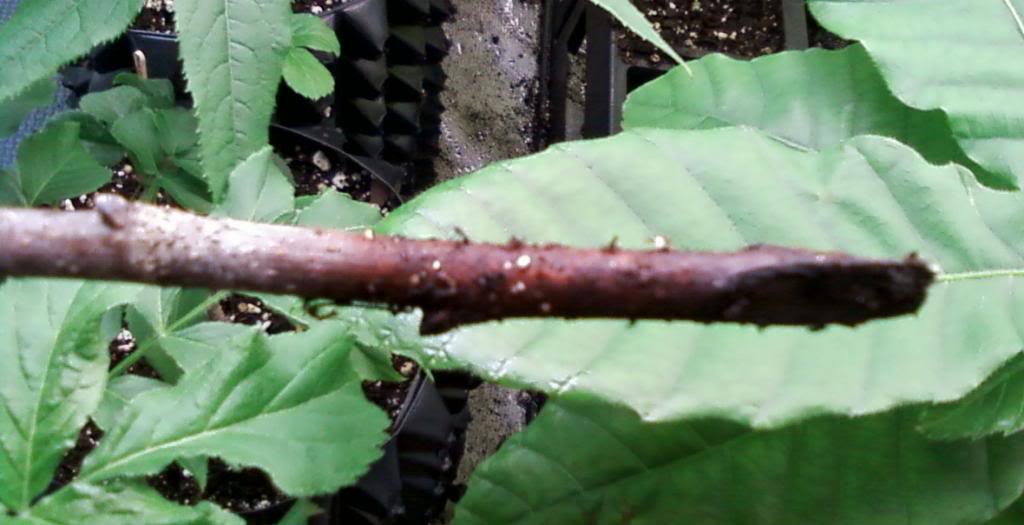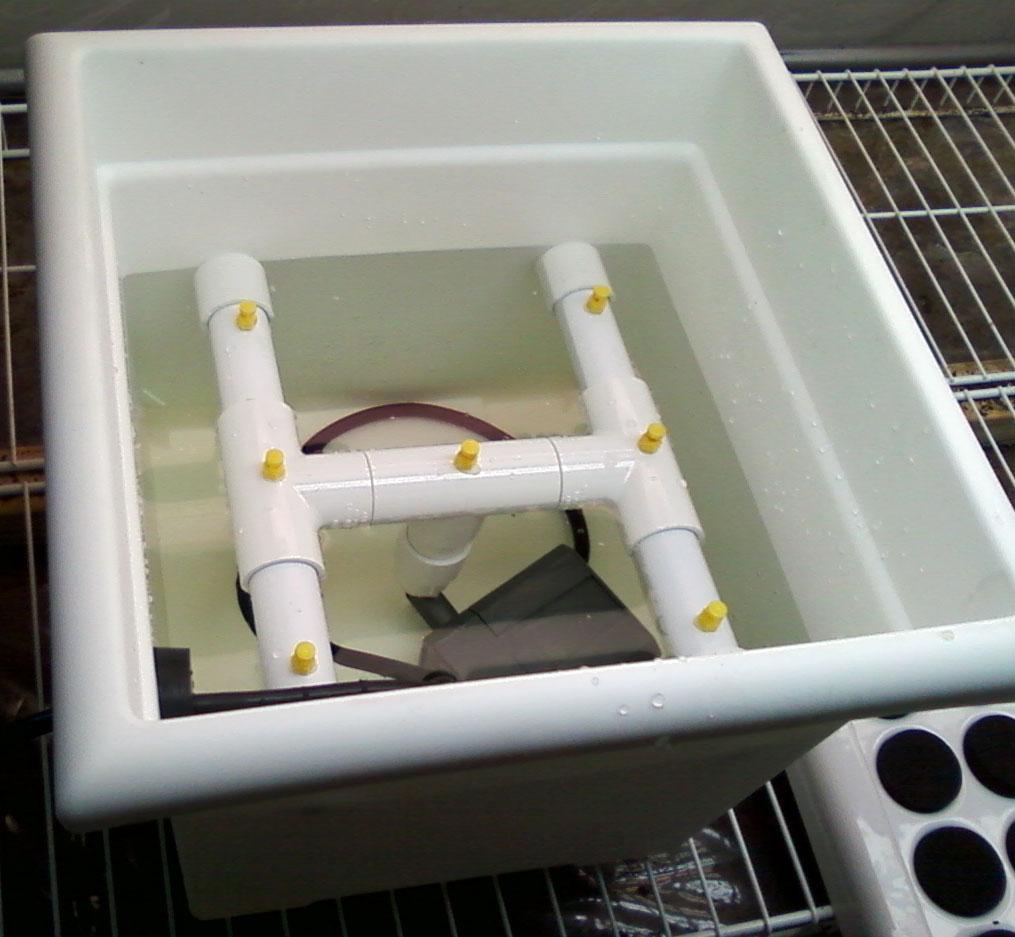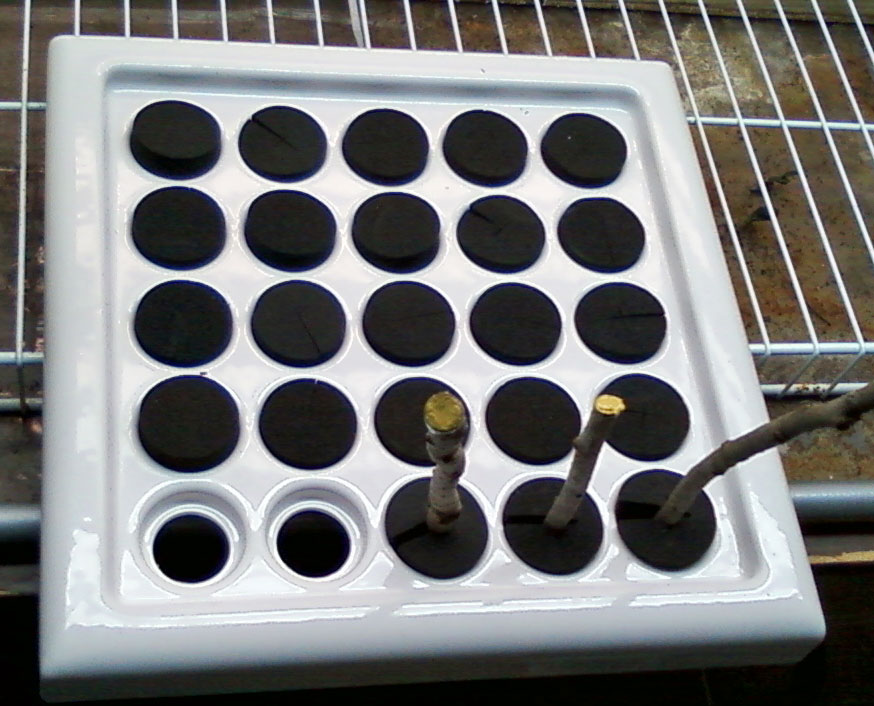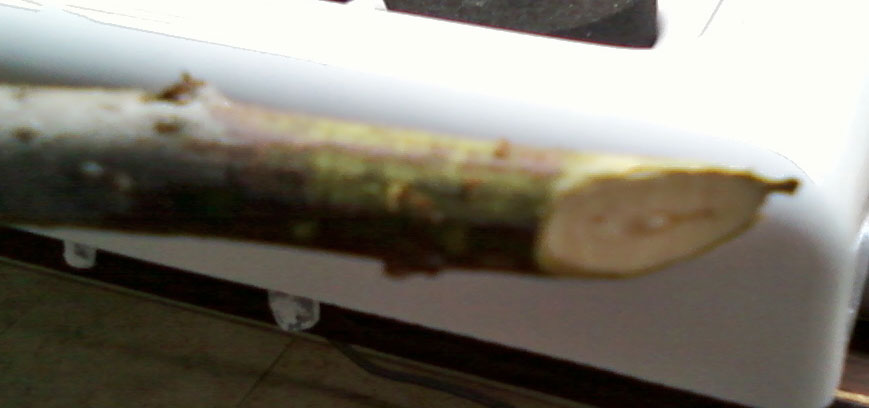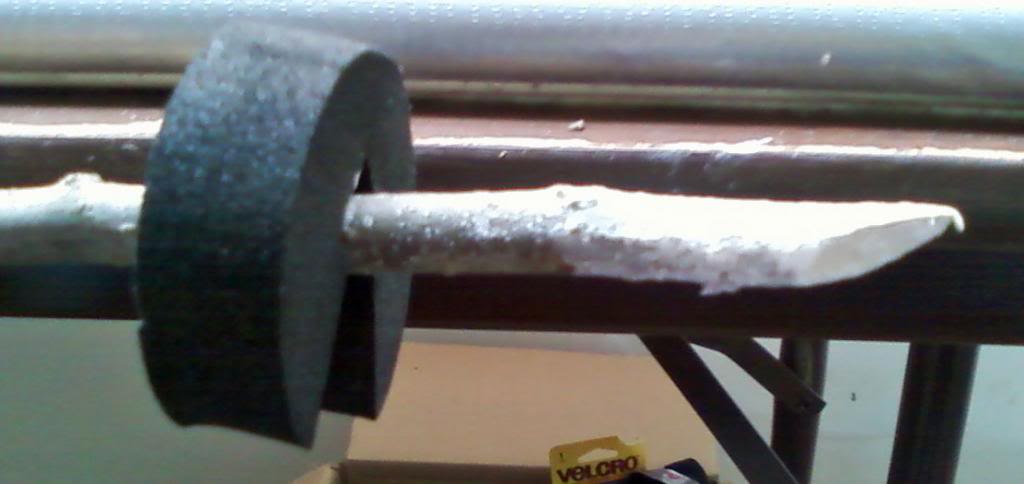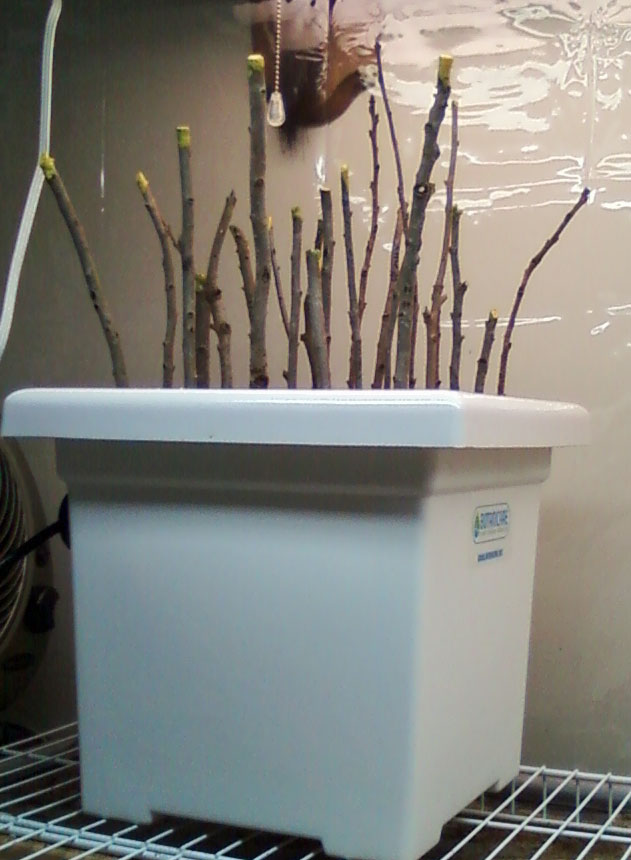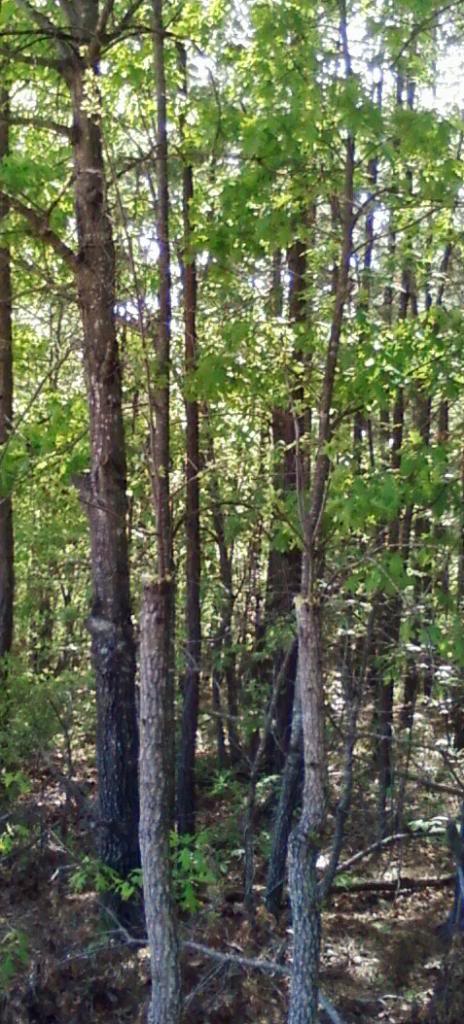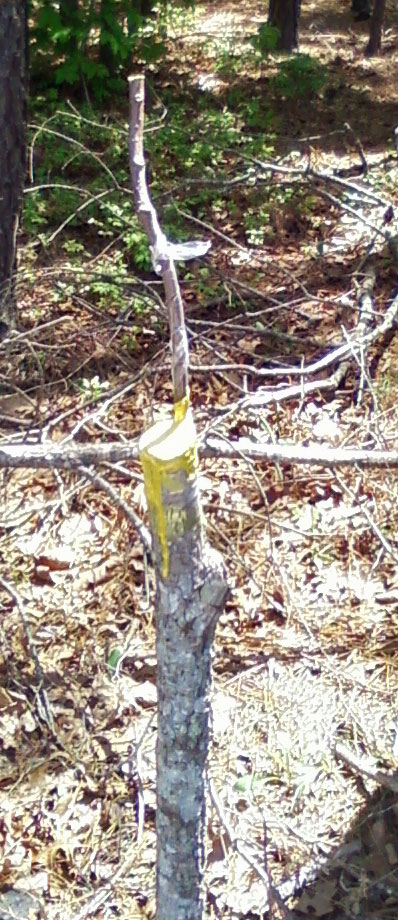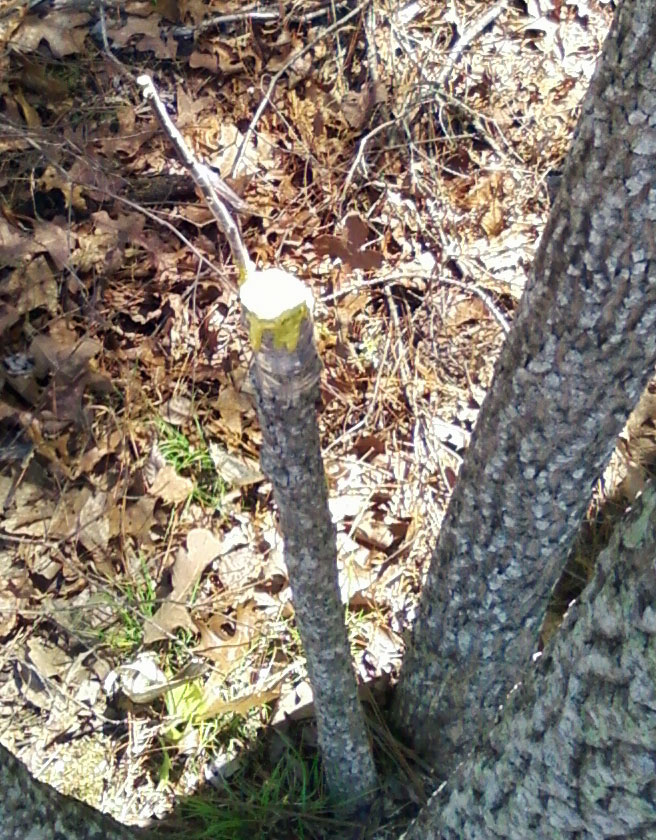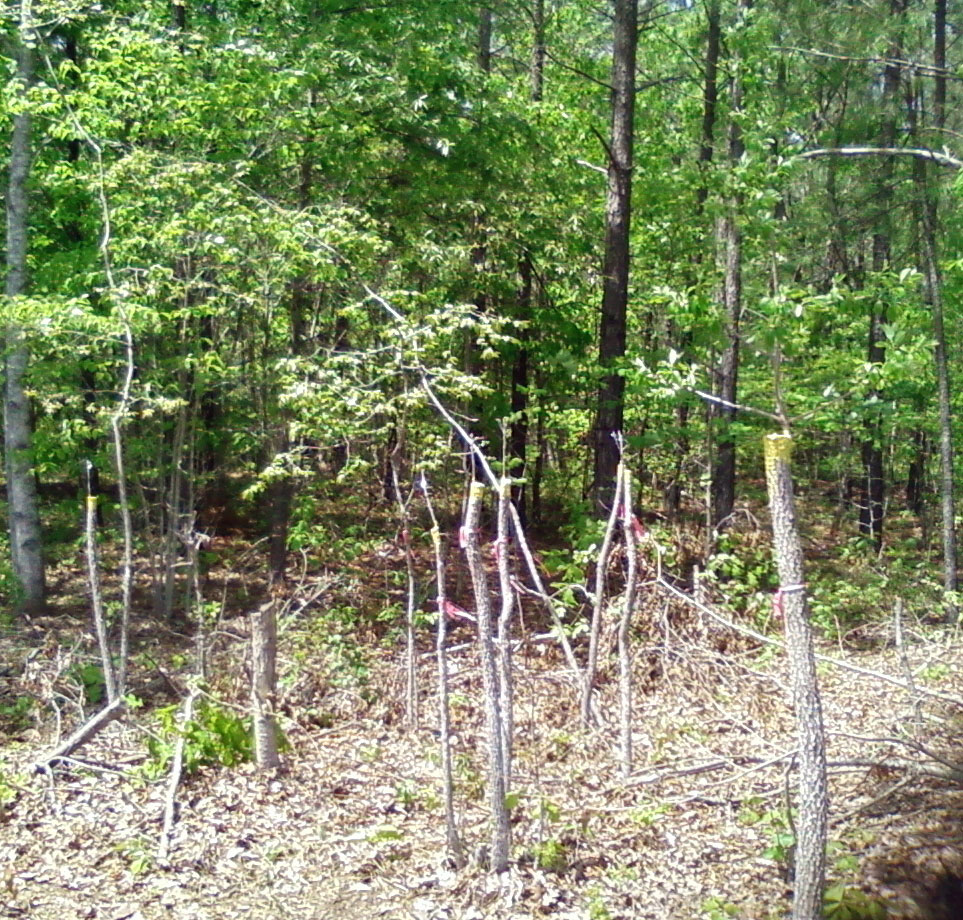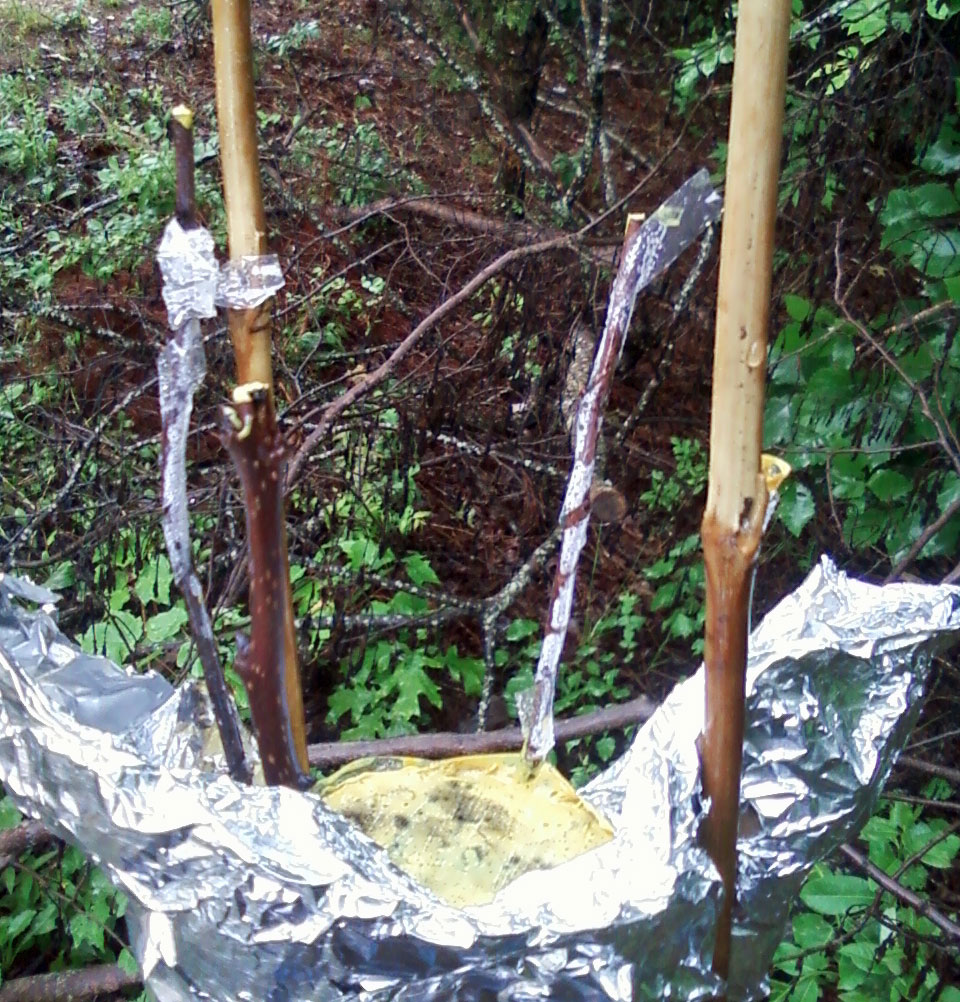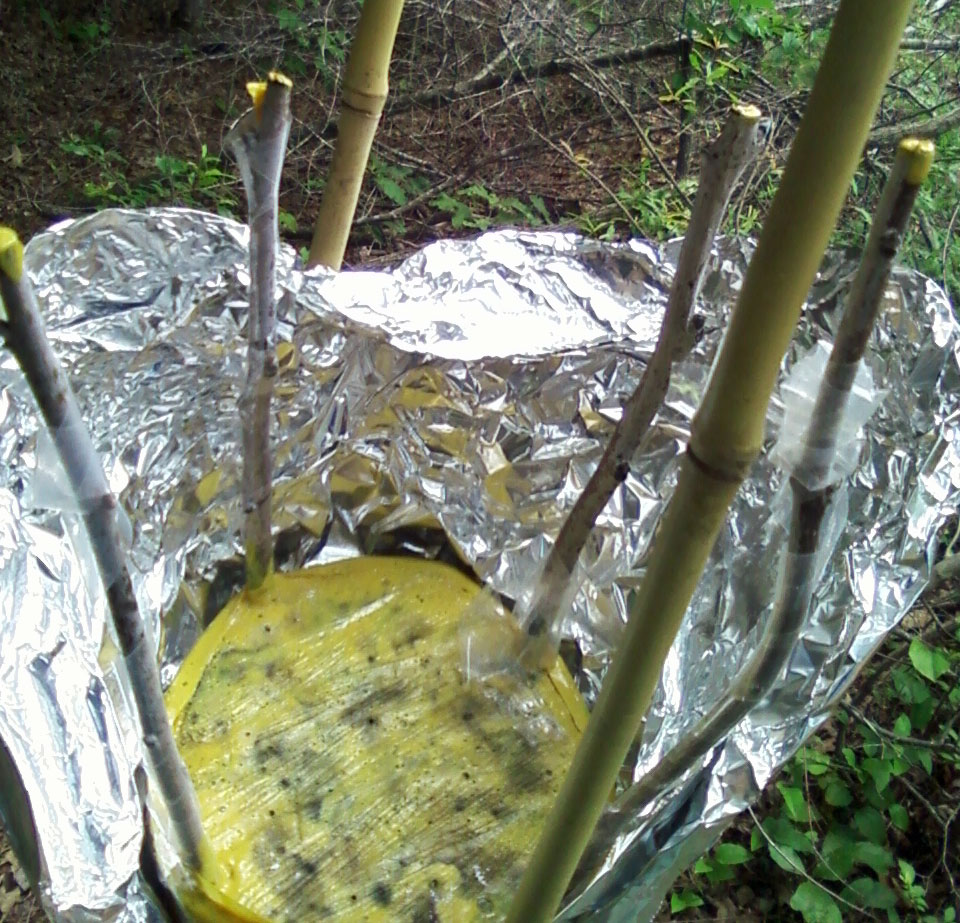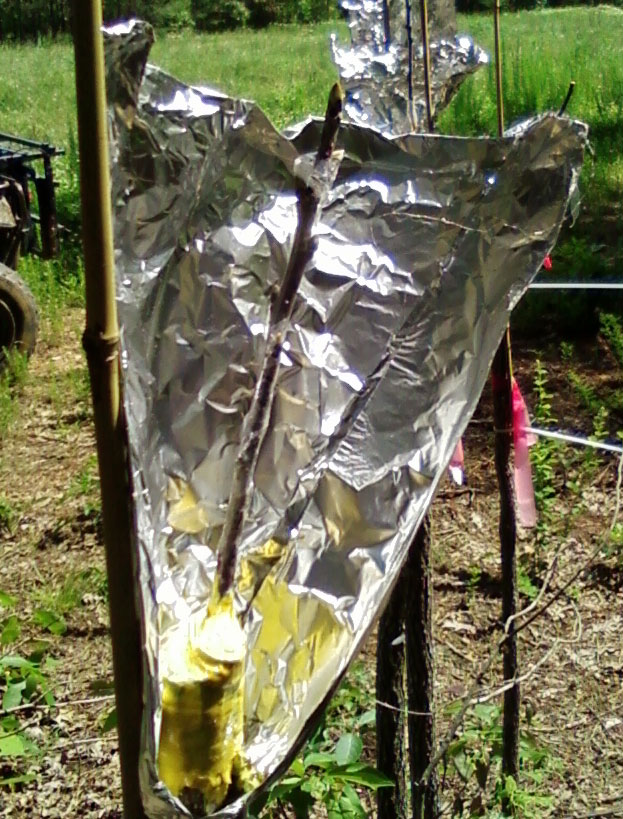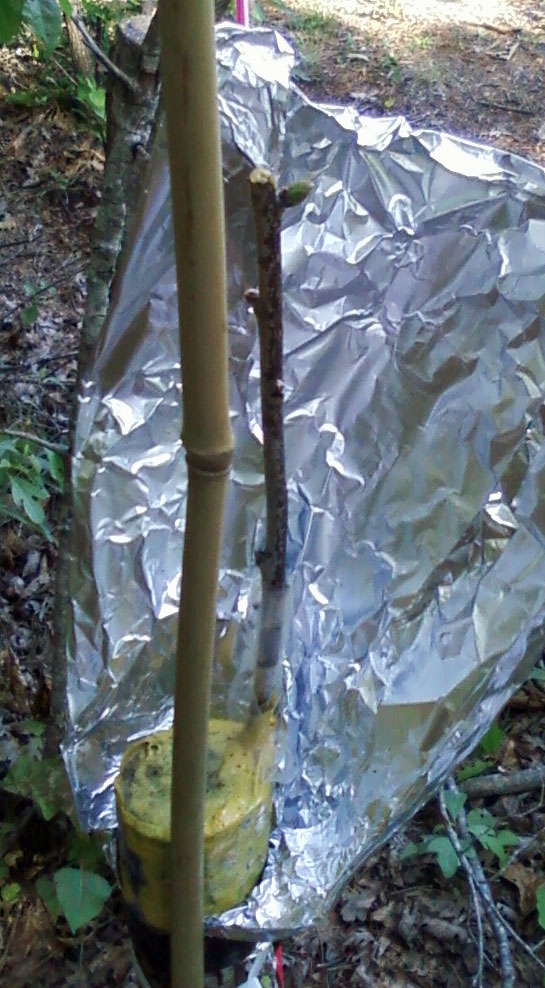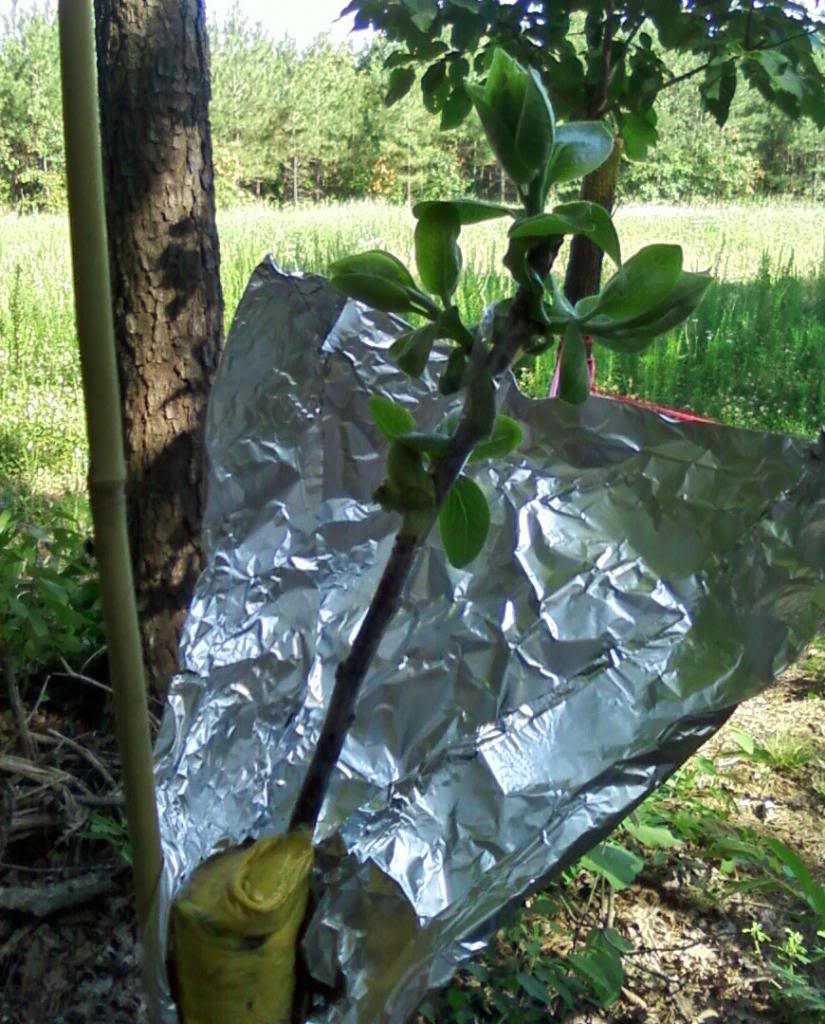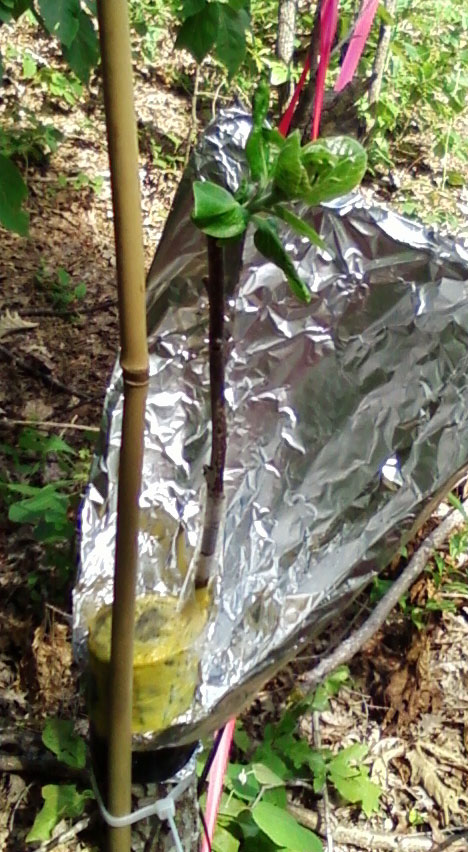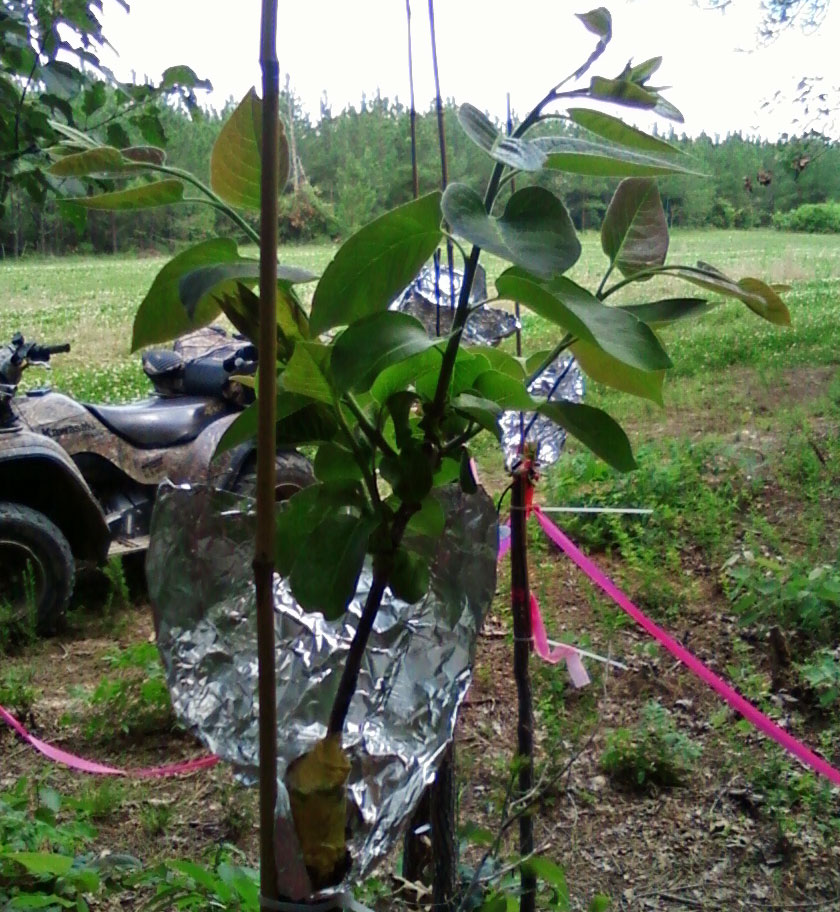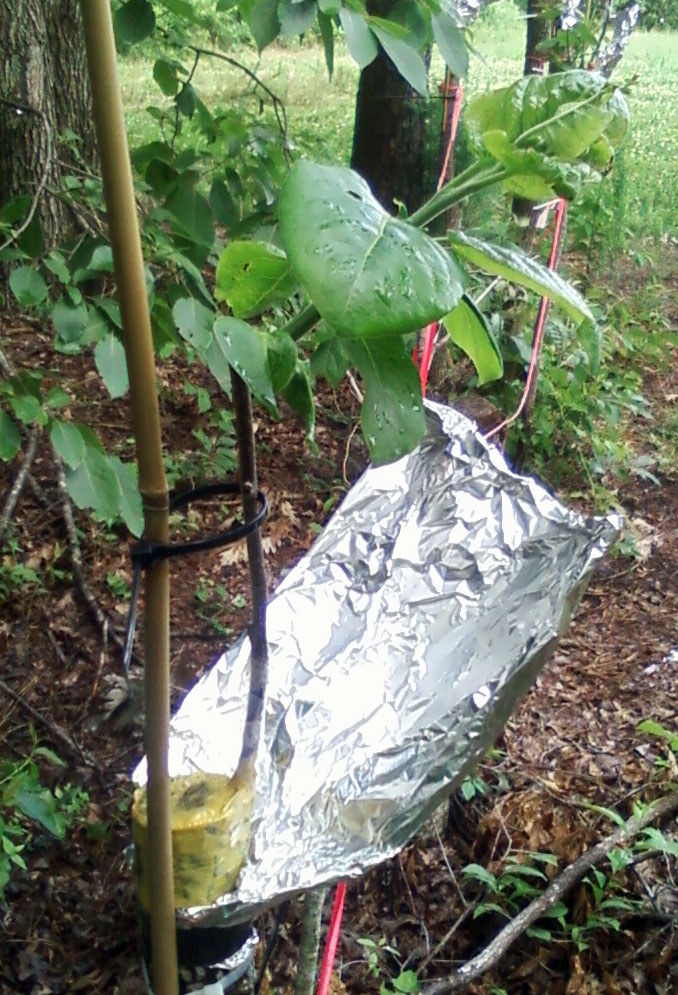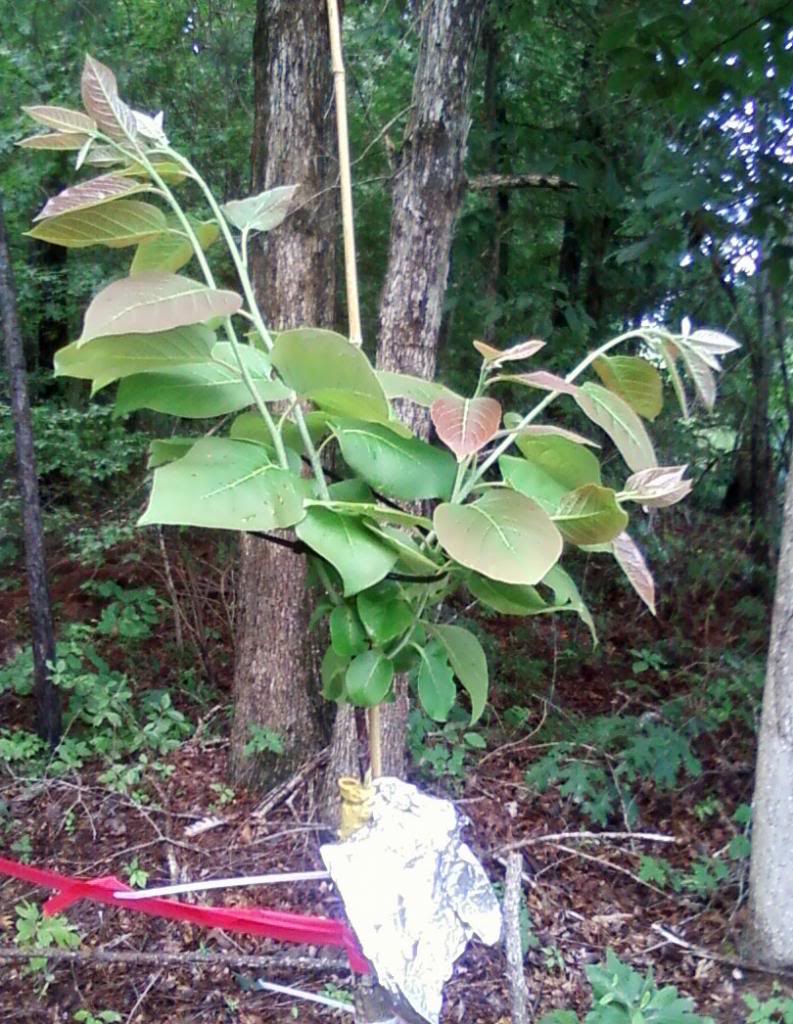All of the persimmon cuttings I tried have now died. They are definitely hard to root. There was very little rooting when I a post mortem. I have considered a few options including air layering. I have seen a number of forum posts on various forums where folks had said they were going to try air layering persimmon trees, but none have come back and reported success. So, I decided to give a cloning machine a try. I figure that if nothing else, I will be able to watch root development using this technique without damaging anything. Right now I'm trying dormant scions, but come spring I may try new actively growing wood.
My cloning machine thread is here:
http://www.qdma.com/forums/showthread.php?t=55506.
Here is the information specifically related to the persimmons:
My last surviving persimmon shriveled up and died, so I conducted a post mortem on them today. They all looked pretty much like this:
As you can see, there was very little rooting. Perhaps if I had kept them on the heating pad longer and waited longer before putting them in the greenhouse, they might have done better.
We will see if the cloning machine can do any better.
Here it is:
It has a plastic reservoir that holds 2 1/2 gal of water. There is a small water pump that sits in the bottom of the tank. The power cord exits through a pre-drilled hole with a rubber grommet above the water line. PVC plumbing is used to direct the out put of the pump to spray tips mounted on top (yellow in the picture).
The lid which just sits on top has 25 cloning sites. There is a neoprene plug for each site. The picture above shows the lower left two sites empty, the lower right 3 sites with cuttings inserted, and the rest of the sites with the neoprene plugs with no cuttings.
You simply fill the unit with purified water, adjust the pH, add cloning fluid and nutrient solution and you are ready to go. The next post will show my first use with the persimmons.
I used a variety of persimmon scions for this. I took them off of a local common persimmon female tree at the farm. I was afraid to use any of the improved variety scion wood I received since it is precious, at least until I get a few trees of it under cultivation. Here is a typical scion I started with.
Notice the yellow on the top end. Once of the things I considered that it takes so long for persimmons to root, it is very for them to dry out. So, after I cut them from the trimmings, I dipped the top end into some grafting seal. I did this with most of the scions. I also decided to leave the terminal buds on some of the scions for variety. Those are pretty thin scions, but I wanted to be sure I had a variety of one and two year wood.
Continued...
